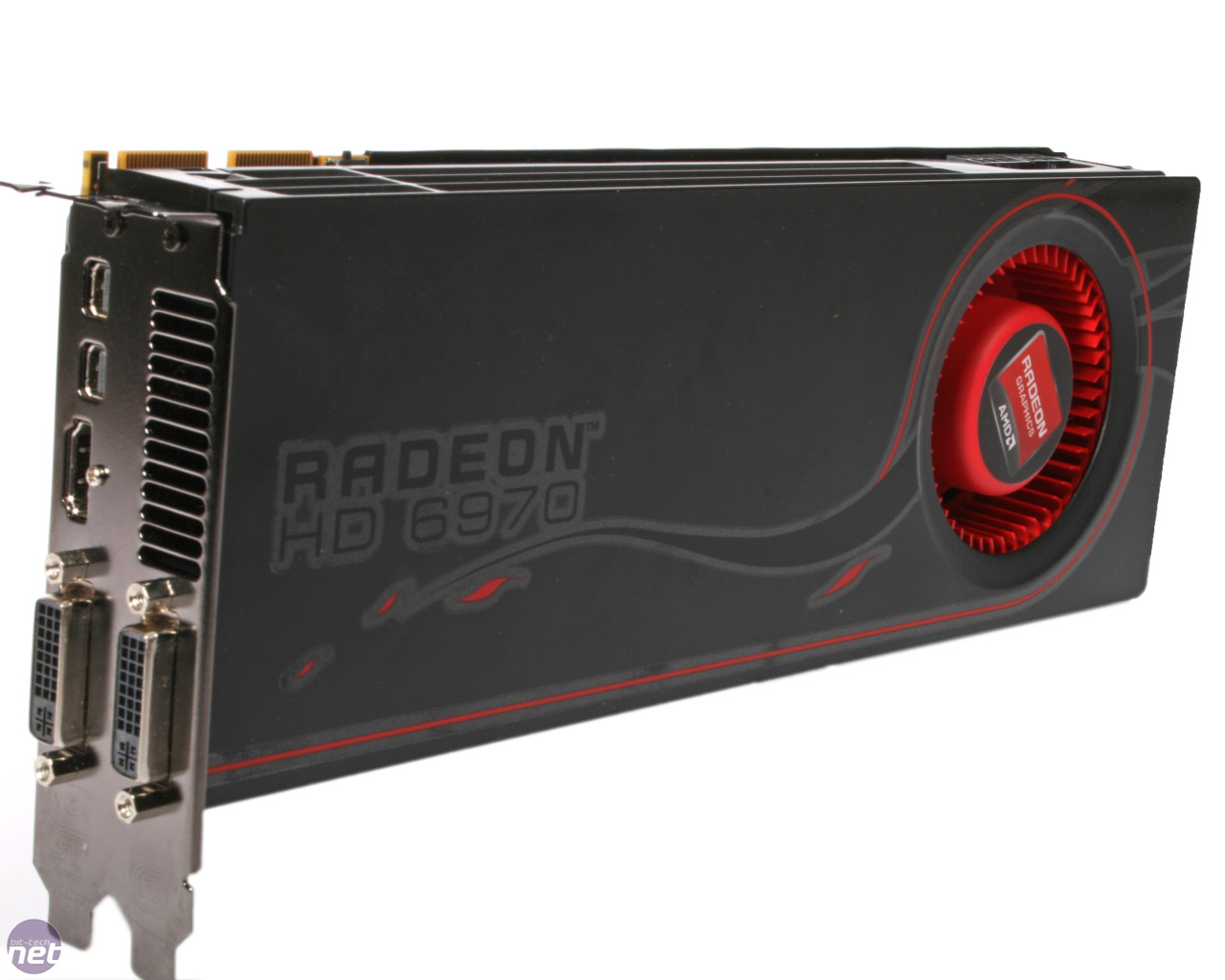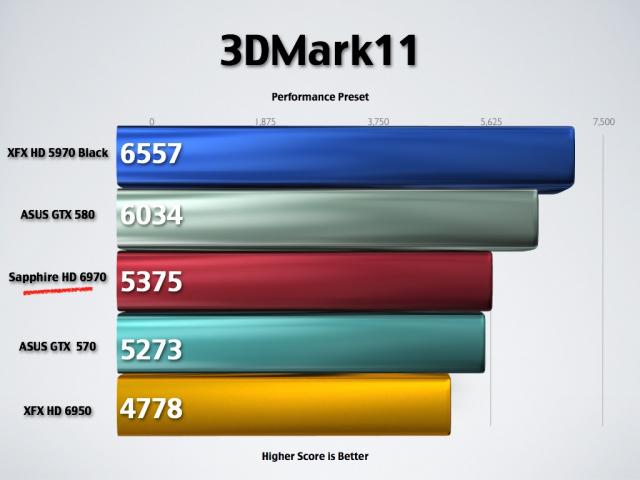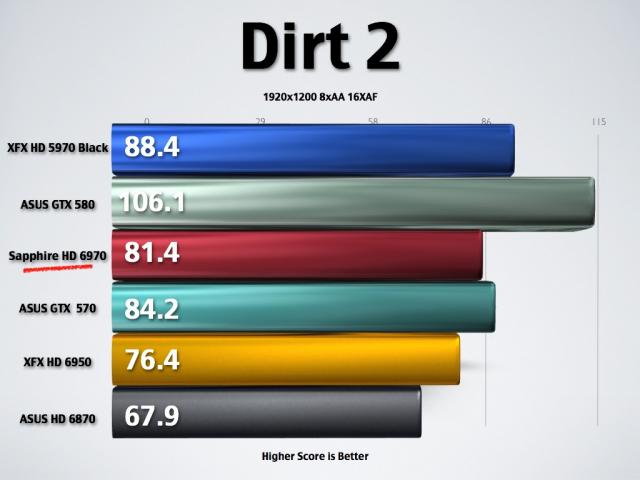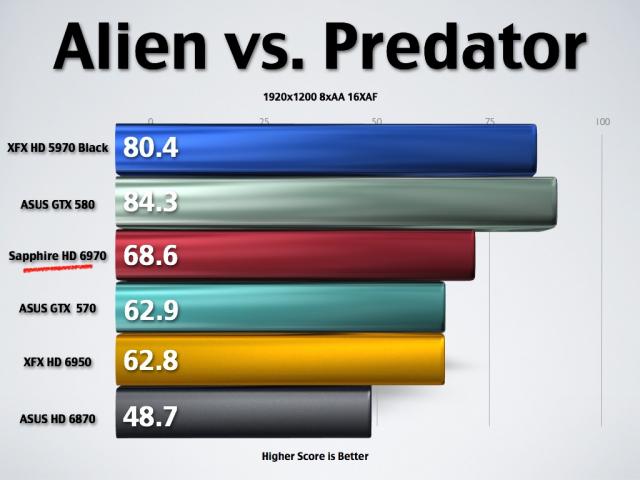In late 2009, ATI launched the 5000-series of graphics card. The series was very successful despite some supply issues. Nvidia had nothing to offer to counter AMD’s graphics departement at the time and took just over six months to roll out its 400-series, with the GTX480 and GTX470 beginning to sell on April 12th. News has now came that ATI has taped out its new products based on the Southern Islands architecture.
Southern Islands has been known to exist for the past three weeks. It is believed to be a hybrid architecture featuring the shaders of the Evergreen architecture, found in the 5000-series, along with the uncore of the next full generation design, dubbed Northern Islands. Website Semiaccurate reports the new design taped out and is now ready for production. As no manufacturer has a new process to offer, there is no doubt now that the new graphics processing units will be manufactured on 40nm process, the same as the 5000-series of cards. Production is expected to start at Taiwan Semiconductor Manufacturing Company within the next few weeks.
The news come at a very bad time for Nvidia and could spell disaster for the green team. Southern Islands tape out arrives just a few weeks later in the year than what Evergreen did last year. If it executes like it did with the 5000-series, ATI is looking at a possible release of a full new generation of products before Nvidia rolls out their current one, putting the green guys a full cycle behind and effectively out of the game. 6000-series cards can be expected in Q4 2010.
6870 Review
t’s been 11 months since ATI last launched a new range of GPUs, and since then the graphics worlds has a distinctly red tinge to it rather than the green we’ve been so used to seeing. With Nvidia late to deliver a DX11 GPU, ATI had the market to itself and shipped 25 million DX11-compatible GPUs to gain first place in the discreet GPU market share. ATI has made considerable inroads in both the number of people using Radeon graphics cards and the number of game development houses using its hardware to optimise and tune their games.
The latter is a considerable victory for ATI, as the more games studios you work with, the more they’ll implement great ways of using your GPU’s features and architecture and the more stable your drivers should be. The HD 6000-series can therefore be seen as ATI’s tricky follow-up – there’s a lot at stake, meaning that ATI could either be really dominant in six months’ time, or drop the ball for Nvidia to pick up.
The latter is a considerable victory for ATI, as the more games studios you work with, the more they’ll implement great ways of using your GPU’s features and architecture and the more stable your drivers should be. The HD 6000-series can therefore be seen as ATI’s tricky follow-up – there’s a lot at stake, meaning that ATI could either be really dominant in six months’ time, or drop the ball for Nvidia to pick up.
6870 Specifications :
| ATI Radeon HD 5870 1GB | ATI Radeon HD 6870 1GB | ATI Radeon HD 5850 1GB | ATI Radeon HD 6850 1GB | ATI Radeon HD 5770 1GB | Nvidia GeForce GTX 470 1,280MB | Nvidia GeForce GTX 460 1GB | Nvidia GeForce GTX 460 768MB | |
| GPU | ||||||||
| Codename | Cypress XT | Barts XT | Cypress Pro | Barts Pro | Juniper XT | GF100 | GF104 | GF104 |
| Frequency | 850MHz | 900MHz | 725MHz | 775MHz | 850MHz | 607MHz | 675MHz | 675MHz |
| Stream Processors | 1,600 (850MHz) | 1,120 (900MHz) | 1,440 (725MHz) | 980 (775MHz) | 800 (850MHz) | 448 (1,215MHz) | 336 (1,350MHz) | 336 (1,350MHz) |
| Layout | 20 SIMD engines | 14 SIMD engines | 18 SIMD engines | 12 SIMD engines | 10 SIMD engines | 14 SMs, 4 GPCs | 7 SMs, 2 GPCs | 7 SMs, 2 GPCs |
| Rasterisers | 2 | 2 | 2 | 2 | 2 | 4 | 2 | 2 |
| Tesselation Units | 1 | 1 | 1 | 1 | 1 | 14 | 7 | 7 |
| Texture Units | 80 | 56 | 72 | 48 | 40 | 56 | 7 | 7 |
| ROPs | 32 | 32 | 32 | 32 | 16 | 40 | 32 | 24 |
| Transistors | 2.15bn | 1.7bn | 2.15bn | 1.7bn | 1.04bn | 3bn | 1.95bn | 1.95bn |
| Size | 334mm2 | 255mm2 | 334mm2 | 255mm2 | 166mm2 | 530mm2 | 348mm2 | 348mm2 |
| Process | 40nm | 40nm | 40nm | 40nm | 40nm | 40nm | 40nm | 40nm |
| Memory | ||||||||
| Amount | 1GB GDDR5 | 1GB GDDR5 | 1GB GDDR5 | 1GB GDDR5 | 1GB DDR5 | 1,280MB GDDR5 | 1GB GDDR5 | 768MB GDDR5 |
| Frequency | 1,050MHz (4.2GHz effective) | 1,050MHz (4.2GHz effective) | 1GHz (4GHz effective) | 1GHz (4GHz effective) | 1.2GHz (4.8GHz effective) | 837MHz (3.2GHz effective) | 900MHz (3.6GHz effective) | 900MHz (3.6GHz effective) |
| Interface | 256-bit | 256-bit | 256-bit | 256-bit | 128-bit | 320-bit | 256-bit | 192-bit |
| Bandwidth | 134.4 GB/sec | 134.4 GB/sec | 128 GB/sec | 128 GB/sec | 76.8 GB/sec | 134 GB/sec | 115 GB/sec | 86 GB/sec |
| Card Specifications | ||||||||
| Power Connectors | 2 x 6-pin PCI-E | 2 x 6-pin PCI-E | 2 x 6-pin PCI-E | 1 x 6-pin PCI-E | 1 x 6-pin PCI-E | 2 x 6-pin PCI-E | 1 x 6-pin PCI-E | 1 x 6-pin PCI-E |
| Max Power Draw | 188W | 151W | 151W | 127W | 108W | 215W | 160W | 150W |
| Idle Power Draw | 27W | 19W | 27W | 19W | Unknown | Unknown | Unknown | Unknown |
| Rec PSU | 500W | Unknown | 500W | Unknown | 450W | 550W | 450W | 450W |
| Rough Street Price | £320 | £220 | £200 | £150 | £120 | £200 | £155 | £120 |
Benchmarks :
3DMark Vantage :
Crysis WarHead :
Aliens VS Predator :
BattleField Bad Company 2 :
Metro 2033 :
Unigine Heaven :
OverClocking :
AMD Radeon HD 6850 Overclocking Results
| Test Item | Standard | Overclocked | Improvement | |||
| Radeon HD 6850 | 775/1000 MHz | 850/1075 MHz | 75/75 MHz | |||
| DX10: Crysis Warhead | 22 | 24 | 9.0% | |||
| DX11: Aliens vs Predator | 23.1 | 25.0 | 8.2% | |||
| DX11: BattleForge | 30.1 | 32.4 | 7.6% | |||
| DX11: Heaven 2.1 | 22.5 | 23.6 | 4.9% | |||
| DX11: Lost Planet 2 | 25.5 | 28.1 | 10.2% | |||
| DX9+SSAO: Mafia II | 39.9 | 43.2 | 8.3% |
6970 Review
The previous Radeon HD 6800-series got our hopes up in two ways – firstly it sounded like it’d be more than a mid-range GPU that went toe-to-toe with Nvidia’s GeForce GTX 460 cards, and secondly it wasn’t all that new. But while the Barts GPU of the HD 6800 looked more like an overclocked HD 5830 with a tweaked front-end unit, the Cayman GPU of the Radeon HD 6900 is a completely new design throughout.
Before we plunge into the details of the new GPU, let’s clear up the naming. We’re sticking with calling these cards ATI Radeons because that’s what most people know them as, and AMD has said that it’s fine with it partners gradually transitioning from ATI to AMD Graphics until 2011. We still plan to switch when AMD’s Fusion APU is launched in early 2011, as it’ll be silly to talk about a single piece of silicon that has both AMD and ATI technology.
Previously ATI has reserved the HD x900 family branding for its dual-GPU cards to give a bolder indication to the customer that a dual-GPU card should be much faster than a single-GPU HD x800-series card. However, because ATI needed the HD 5700-series to exist with the HD 6000-series, ‘Radeon HD 6800’ was already taken. The Radeon HD 6950 2GB and Radeon HD 6970 2GB are therefore both single-GPU cards. There is a plan to release a dual-GPU card based on two Cayman GPUs which we assume will be called the Radeon HD 6990 4GB. With the names out of the way, let’s stuck into what’s inside the silicon that makes a Cayman worthy of its HD 6900 name.
Before we plunge into the details of the new GPU, let’s clear up the naming. We’re sticking with calling these cards ATI Radeons because that’s what most people know them as, and AMD has said that it’s fine with it partners gradually transitioning from ATI to AMD Graphics until 2011. We still plan to switch when AMD’s Fusion APU is launched in early 2011, as it’ll be silly to talk about a single piece of silicon that has both AMD and ATI technology.
Previously ATI has reserved the HD x900 family branding for its dual-GPU cards to give a bolder indication to the customer that a dual-GPU card should be much faster than a single-GPU HD x800-series card. However, because ATI needed the HD 5700-series to exist with the HD 6000-series, ‘Radeon HD 6800’ was already taken. The Radeon HD 6950 2GB and Radeon HD 6970 2GB are therefore both single-GPU cards. There is a plan to release a dual-GPU card based on two Cayman GPUs which we assume will be called the Radeon HD 6990 4GB. With the names out of the way, let’s stuck into what’s inside the silicon that makes a Cayman worthy of its HD 6900 name.
The Card's Specifications :
| Nvidia GeForce GTX 580 1.5GB | ATI Radeon HD 6970 2GB | Nvidia GeForce GTX 480 1.5GB | ATI Radeon HD 6950 2GB | ATI Radeon HD 5870 1GB | ATI Radeon HD 6870 1GB | |
| GPU | ||||||
| Codename | GF110 | Cayman XT | GF100 | Cayman Pro | Cypress XT | Barts XT |
| Frequency | 772MHz | 880MHz | 700MHz | 800MHz | 850MHz | 900MHz |
| Stream Processors | 512 (1,544MHz) | 1,536 (880MHz) | 480 (1,4GHz) | 1,408 (800MHz) | 1,600 (850MHz) | 1,120 (900MHz) |
| Layout | 16 SMs, 4 GPCs | 24 SIMD Engines | 15 SMs, 4GPCs | 22 SIMD Engines | 20 SIMD Engines | 14 SIMD Engines |
| Rasterisers | 4 | 2 | 4 | 2 | 2 | 2 |
| Tesselation Units | 16 | 2 | 15 | 2 | 1 | 1 |
| Texture Units | 64 | 96 | 60 | 88 | 80 | 56 |
| ROPs | 48 | 32 | 48 | 32 | 32 | 32 |
| Transistors | 3bn | 2.6bn | 3bn | 2.6bn | 2.15bn | 1.7bn |
| Size | XXXmm2 | Unknown | 530mm2 | Unknown | 334mm2 | 255mm2 |
| Process | 40nm | 40nm | 40nm | 40nm | 40nm | 40nm |
| Memory | ||||||
| Amount | 1.5GB GDDR5 | 2GB GDDR5 | 1.5GB GDDR5 | 2GB GDDR5 | 1GB GDDR5 | 1GB GDDR5 |
| Frequency | 1.02GHz (4.08GHz effective) | 1.375GHz (5.5GHz effective) | 924MHz (3.7GHz effective) | 1.25GHz (5GHz effective) | 1,050MHz (4.2GHz effective) | 1,050MHz (4.2GHz effective) |
| Interface | 384-bit | 256-bit | 384-bit | 256-bit | 256-bit | 256-bit |
| Bandwidth | 192.4GB/sec | 176GB/sec | 177GB/sec | 160GB/sec | 134.4GB/sec | 134.4GB/sec |
| Card Specifications | ||||||
| Power Connectors | 1 x 6-pin, 1 x 8-pin | 1 x 6-pin, 1 x 8-pin | 1 x 6-pin, 1 x 8-pin | 2 x 6-pin PCI-E | 2 x 6-pin PCI-E | 2 x 6-pin PCI-E |
| Maximum Power Draw | 244W | 250W | 250W | 225W | 188W | 151W |
| Idle Power Draw | Unknown | Unknown | Unknown | Unknown | 27W | 19W |
| Recommended PSU | 600W | Unknown | 600W | Unknown | 500W | Unknown |
| Typical Street Price | £399 | £310 | £330 | £235 | £320 | £220 |
Benchmarks :
3DMark Vantage :
Crysis WarHead :
Aliens VS Predator :
BattleField Bad Company 2 :
Metro 2033 :
Unigine Heaven :
6970 Vietnam edition from our Friends in Sapphire
If there’s one constant in the world of graphics cards it’s that there is always new around the corner. NVIDIA and AMD have been trading blows for many years in the video card industry with one side or the other having the better chip or price/performance ratio. With DirectX 9.0 the 6xxx series and 7xxx series ruled the roost in terms of performance. With the advent of DirectX 10.0, the 8xxx series ruled the roost.
AMD has had an uphill battle in the last few years that they won with the HD 5xxx series, the first graphics card to support DirectX 11 on the market. That ruled the roost until the GeForce GTX480 came into the market in March. AMD released a top to bottom family of video cards before NVIDIA released their first DirectX 11 card and now NVIDIA has had the top spot in single chip gaming with their 480 and now 580 cards. Today AMD is releasing their next architecture, the Cayman series of video cards. They are launching a Cayman XT and a Cayman Pro chip in the form of the RADEON HD 6970 and RADEON HD 6950. Today’s review is on the Sapphire HD 6970 card that is clocked higher than the reference card, but we’ll go into more detail in the review itself.
Benchmarks :
3DMark Vantage :
Dirt 2 :
Alien VS Predatop :
Unigine Heaven :
6990 Review :
With this generation of high-end, single-GPU cards all on the table, consumers and manufacturers are still hankering for more: more power and more hardware bragging rights. Never mind the fact that Crysis 2 isn’t looking like a GPU-eating monster – larger monitors, higher resolutions and the increasing popularity of multi-monitor setups mean there’s never going to be a ceiling for GPU performance.
With the big single-GPU guns of the GeForce GTX 580 1.5GB and Radeon HD 6970 2GB already releases, the only way up for now is a multi-GPU card. While Nvidia has plans for a dual-GPU release in the near future, it’s AMD that got in first with its gargantuan Radeon HD 6990 4GB.
Specification :
Benchmarks :
3DMark (DX11) :
Alien VS Predator (DX11) :
BattleField Bad Company :
Dirt 2 :
























